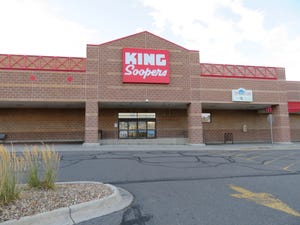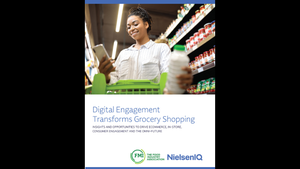FORECASTING DEMANDFORECASTING DEMAND
As higher input prices continue to inflate the cost of consumer packaged goods, retailers are turning to demand intelligence software to predict how shoppers will react to different price points. Armed with store-specific, item-level data related to past purchasing behavior, and taking merchandising attributes into account, demand intelligence engines are also empowering grocers to optimize promotions,
February 4, 2008
LIZ PARKS
As higher input prices continue to inflate the cost of consumer packaged goods, retailers are turning to demand intelligence software to predict how shoppers will react to different price points.
Armed with store-specific, item-level data related to past purchasing behavior, and taking merchandising attributes into account, demand intelligence engines are also empowering grocers to optimize promotions, rationalize stockkeeping units, improve their in-stock position and more accurately schedule labor, industry observers note.
“Demand intelligence technology can be applied to any function in retail that can be improved or optimized by having detailed consumer demand data,” said Scott Langdoc, vice president of research and the business leader for IDC/Global Retail Insights, Framingham, Mass. For instance, grocers who are effectively leveraging the technology to set prices “have been able to do something that retailers have historically not been able to do: raise sales and increase margins at the same time. Typically, they've had to either sacrifice sales to improve margins or discount product and reduce margins in order to grow sales.”
Demand intelligence price optimization tools can help boost sales by between 5% and 9% and spur margin increases ranging from 1% to 4%, according to Langdoc.
The technology is drawing the attention of a host of retailers. Supervalu, Wal-Mart Stores, Target, Safeway, Food Lion and H.E. Butt Grocery Co. are among the chains using or planning to roll out these tools.
“All of the calls we received from retailers at the end of last year and as we move into 2008” were related to demand intelligence technology, said Mike Griswold, retail director for AMR Research, Boston. He expects interest to continue as grocers automate business processes including price, space management, category management, store- and warehouse-level replenishment and labor scheduling.
“There are significant opportunities to optimize and improve, particularly your promotional in-stock position and your inventory,” he noted.
Longo Brothers Fruit Markets, Mississauga, Ontario, is uploading three years' worth of data with the hopes of doing just that.
“Competing on price with larger grocery chains is a challenge, so we'd like to compete [through customer service] by making sure we have the product available on the shelf,” said John Charleson, director of information technology and supply chain for Longo's. “Right now, forecasting for us is a very manual task, so the demand forecasting tool will help us forecast a much broader range of SKUs.”
The retailer's predictions will be based on data related to store-level item movement and all of the marketing activities that support item movement, such as retail prices, in-store displays and temporary price reductions.
In order to figure factors into the equation such as how higher gas prices might affect consumers' propensity to buy higher-priced items, Longo's would have to “collect overall sales volume figures during the early stages of a change in buying attitude and use those factors for future demand planning,” said Langdoc.
“That said, most good grocery-oriented demand intelligence tools allow for the input of market data from companies like Nielsen and IRI [Information Resources Inc.] into their models to gauge overall market and consumer activity. The really good tools can take in consumer panel data and use that for projecting short-term demand.”
Sometime next month, Longo's will begin to feed information gleaned from its 15 stores into Tomax's Retail.net demand forecast planning application.
“We'll be able to use the forecast information in a number of ways, including ordering product and making sure we are in stock on every single one of our SKUs as opposed to just high-focus items,” said Charleson.
Longo's demand forecasting capabilities will become an essential part of the retailer's computer-assisted ordering function, which should be up and running later this year.
The system will automate store and warehouse ordering processes by combining forecast information with data related to current stock levels.
The capability will shift the role of its buyers, noted Charleson.
“They will become more inventory planners and analysts, as opposed to just buyers managing the demand forecasting process manually,” he said.
Once Longo's begins to optimize its in-stock position, it may be able to fine-tune its forecasting capabilities by leveraging additional marketing variables — for instance, data related to “what consumers would actually buy if their products were in stock all of the time,” suggested Marc Dietz, vice president of product marketing for retail at DemandTec, a provider of demand intelligence tools for price and promotion optimization.
Longo's is optimistic that its strategy will help improve sales.
“That's our biggest driver,” said Charleson. “It will also improve customer service both in our stores and on our e-commerce site.”
Griswold has seen sales increases of between 1% and 2% resulting from forecast-driven improvements to in-stock positions.
“We've also seen a 3% to 5% reduction in inventory dollars,” he said. “When you are better able to predict demand, you don't have to carry as much safety stock, both in the stores and in the distribution center.”
Demand intelligence engines can dramatically improve promotional in-stock positions as well.
“Typically, promotional out-of-stocks range anywhere from 12% to 17%,” Griswold said. “But with a good demand intelligence engine, we've seen that number drop to 8% or 10%, which is almost an eight-point change in promotional in-stocks.”
Although demand intelligence technologies are applicable across several business functions, tools must be applied separately to each. But that could soon change.
“There have been these dividing lines between functions for retailers doing demand forecasts,” said Langdoc. “But the way it should be, and the way I am predicting it will start to be in 2008, is that there will be a central demand intelligence engine that creates one forecast, one understanding of what demand will be, and then, from that engine, the data will drive the individual business units.”
Langdoc said the supermarket industry is at about a 3 right now on a scale ranging from 0 to 10.
“My No. 1 prediction is that the requests for proposals from retailers to their technology vendors will be asking for centralized demand intelligence in 2008,” he said. “Retailers want this sort of consolidated forecasting.”
Griswold concurs.
“Retailers don't want to end up reconciling forecasts from one engine that has one number with a forecast from a second engine that has a different number, and then someone having to try to figure out which number is right,” he said. “One of the things that AMR is advocating, and that you will see in 2008, is retailers and their technology vendors will be focusing on implementing a single demand forecasting engine that will drive all the basic business processes.”
Because Longo's implemented Tomax as an enterprise resource system, it is “almost to the centralization point,” said Charleson. “As an ERP, Tomax allows us to have a central data system, so from item movement, all of our pricing, all of our inventory management is run out of the Tomax ERP suite, Retail.net, which runs at our office environment. From there, it is accessible as a Web service to all of our stores, and in the future we will be able to push that network out to our suppliers.”
Longo's, which has four more stores in development, has had its Tomax ERP application running for almost two years now.
“We've already essentially recovered the money that we invested there,” said Charleson. “Adding the demand intelligence forecast will not be an additional huge investment spend because of the way we bundled the package.”
So far, as a result of implementing the Tomax ERP system, Longo's in-stock position in its warehouse has improved by 1.5%, said Charleson. “Once our demand intelligence tool has been fully implemented, we expect to see at least another 1% improvement at the store level.”
About the Author
You May Also Like




